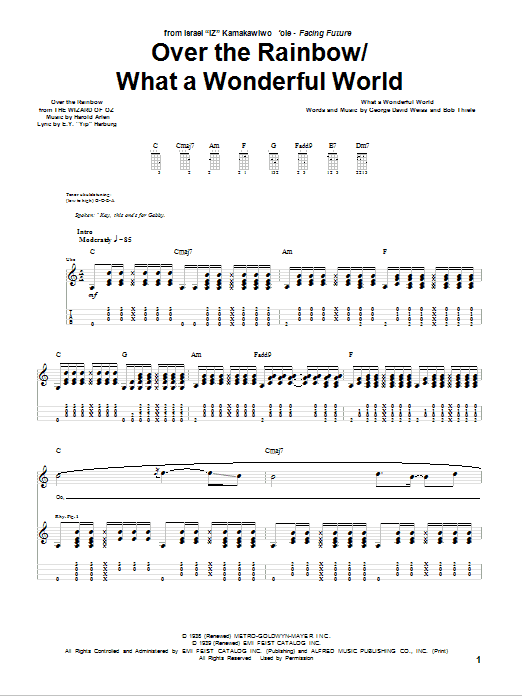The ukulele, a small four-stringed instrument originating from Hawaii, has become increasingly popular in recent years. Its compact size, affordable price, and versatility make it an excellent choice for beginners looking to learn a musical instrument. This article will discuss the process of learning to play the ukulele, with a focus on how beginners can start reading ukulele sheet music and become proficient in playing the instrument in 14 days or less.
Choosing the Right Ukulele
Before diving into your ukulele journey, it’s essential to choose the right instrument for your needs. Ukuleles come in four main sizes: soprano, concert, tenor, and baritone.
Soprano ukuleles are the smallest and most common, with a bright, cheerful sound. Concert and tenor ukuleles are slightly larger, offering a more resonant tone and increased volume.
Baritone ukuleles, the largest size, are tuned differently from the other three and produce a deeper, more guitar-like sound.

When selecting a ukulele, consider factors such as your budget, hand size, and the type of music you want to play. If you’re a complete beginner, it’s generally best to start with a soprano or concert ukulele, as these are the most accessible and affordable options.
The Benefits of Learning to Play the Ukulele
The ukulele is a fantastic instrument for individuals of all ages and skill levels. Some of the many benefits of learning to play the ukulele include:
- Improved cognitive function: Learning a musical instrument has been shown to enhance memory, attention, and problem-solving skills.
- Stress relief: Playing music can help reduce stress and anxiety, promoting relaxation and mental well-being.
- Social connections: Joining a ukulele group or taking lessons can help you meet new people who share your interests.
- Personal satisfaction: Mastering a new skill can boost self-esteem and provide a sense of accomplishment.
Selecting the Right Ukulele for You
Before you begin your ukulele journey, it’s essential to choose the right instrument for your needs. Ukuleles come in four main sizes: soprano, concert, tenor, baritone and bass. Soprano ukuleles are the smallest and most common, with a bright, cheerful sound. Concert and tenor ukuleles are slightly larger, offering a more resonant tone and increased volume. Baritone ukuleles, the largest size, are tuned differently from the other three and produce a deeper, more guitar-like sound.
When selecting a ukulele, consider factors such as your budget, hand size, and the type of music you want to play. If you’re a complete beginner, it’s generally best to start with a soprano or concert ukulele, as these are the most accessible and affordable options.
Download Sheet Music
Ukulele Basics and Tuning
Once you have your ukulele, it’s essential to familiarize yourself with its various parts and how they function. Key components include the strings, frets, tuning pegs, and the soundhole. Additionally, you’ll need to learn the basic techniques for holding and strumming the ukulele, as well as how to tune it.
Tuning is crucial for producing a pleasant sound when playing. The standard tuning for a soprano, concert, or tenor ukulele is G-C-E-A. Use a digital tuner or a tuning app to ensure that each string is tuned accurately.
Reading Ukulele Sheet Music
Reading ukulele sheet music is vital for learning to play the instrument efficiently. Sheet music provides a visual representation of the notes, chords, and rhythms you’ll need to play a particular piece of music. As a beginner, you’ll primarily focus on chord charts and simple melodies.
Chord charts display the finger positions required to play specific chords. Each chord is represented by a diagram that shows the frets and strings you’ll need to press. To read a chord chart:
- Hold your ukulele vertically, with the headstock pointing upward.
- Look at the diagram and identify the vertical lines, which represent the strings, and the horizontal lines, which represent the frets.
- Place your fingers on the corresponding strings and frets as indicated by the diagram.
- Strum the strings to play the chord.
To read sheet music for simple melodies, you’ll need to learn how to interpret standard musical notation. This includes understanding the staff (the set of horizontal lines and spaces on which notes are written), clefs, time signatures, and note values.
The 14-Day Ukulele Challenge
With a basic understanding of the ukulele and sheet music, you can now embark on a 14-day challenge to learn to play the instrument. Here’s a suggested timeline:
Day 1-3: Learn the basics of playing the ukulele, including how to hold it, how to tune it, and how to strum the strings. Practice simple chord progressions, such as C-F-G7, and practice switching between chords.
Day 4-7: Start reading ukulele sheet music. Familiarize yourself with the different symbols used in musical notation and practice reading simple songs, such as nursery rhymes or folk songs.
Day 8-10: Practice more complex chord progressions, such as Am-Dm-G7-C, and practice playing songs that use these chords.
Day 11-12: Practice fingerpicking and other advanced techniques, such as hammer-ons and pull-offs.
Day 13-14: Practice playing songs that combine chords and fingerpicking, such as “Somewhere Over the Rainbow” or “Stand By Me.”
Throughout the 14-day period, it is important to practice consistently and set realistic goals for yourself.
Learning to play the ukulele in 14 days or less is an attainable goal for beginners with the right approach and dedication. By selecting a suitable ukulele, familiarizing yourself with its components and tuning, and practicing regularly, you can quickly build a solid foundation in playing this delightful instrument. Additionally, understanding how to read ukulele sheet music, including chord charts and basic musical notation, is crucial for your progress.
To achieve proficiency within a short time frame, set realistic daily goals, and consistently practice chords, strumming patterns, and simple melodies. Embrace the challenge, and remember that patience and persistence are key to mastering any musical instrument. With determination and focus, you’ll soon find yourself playing the ukulele with confidence and enjoying the rewarding experience of creating music with this charming and versatile instrument.

